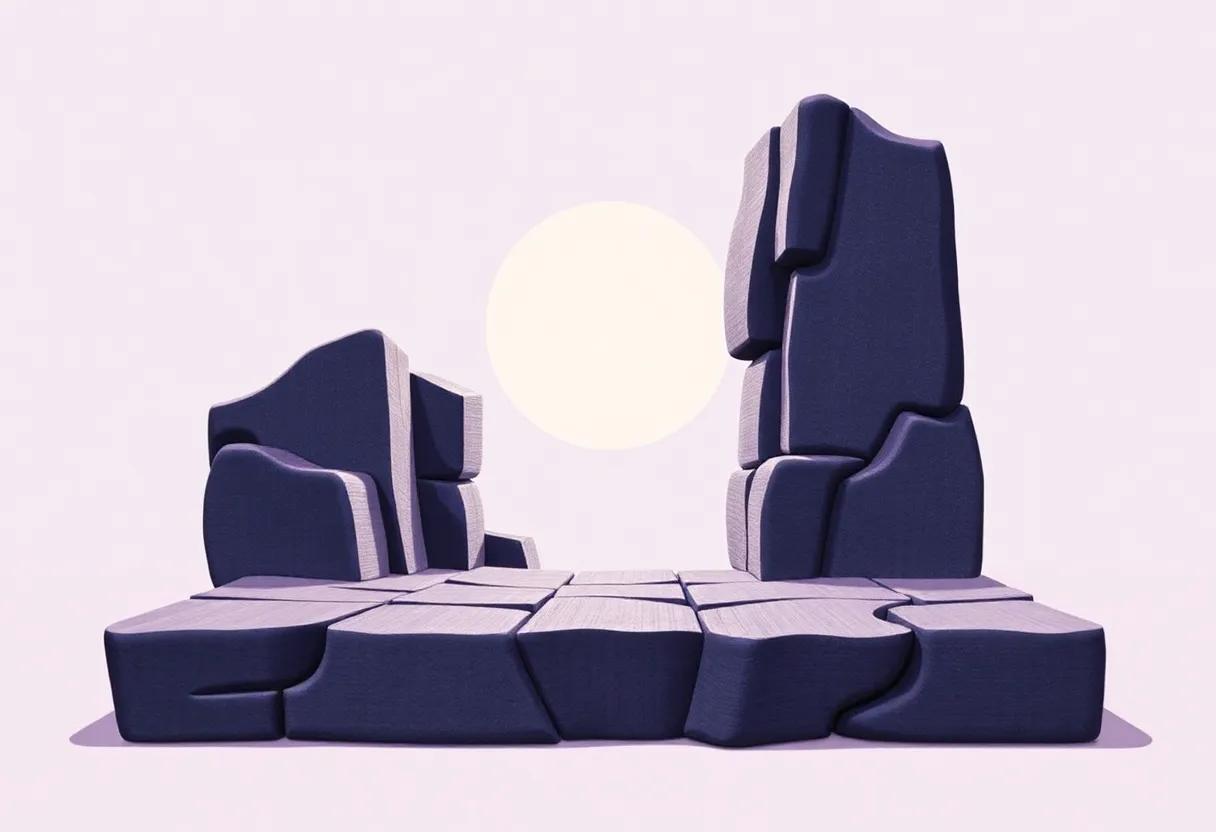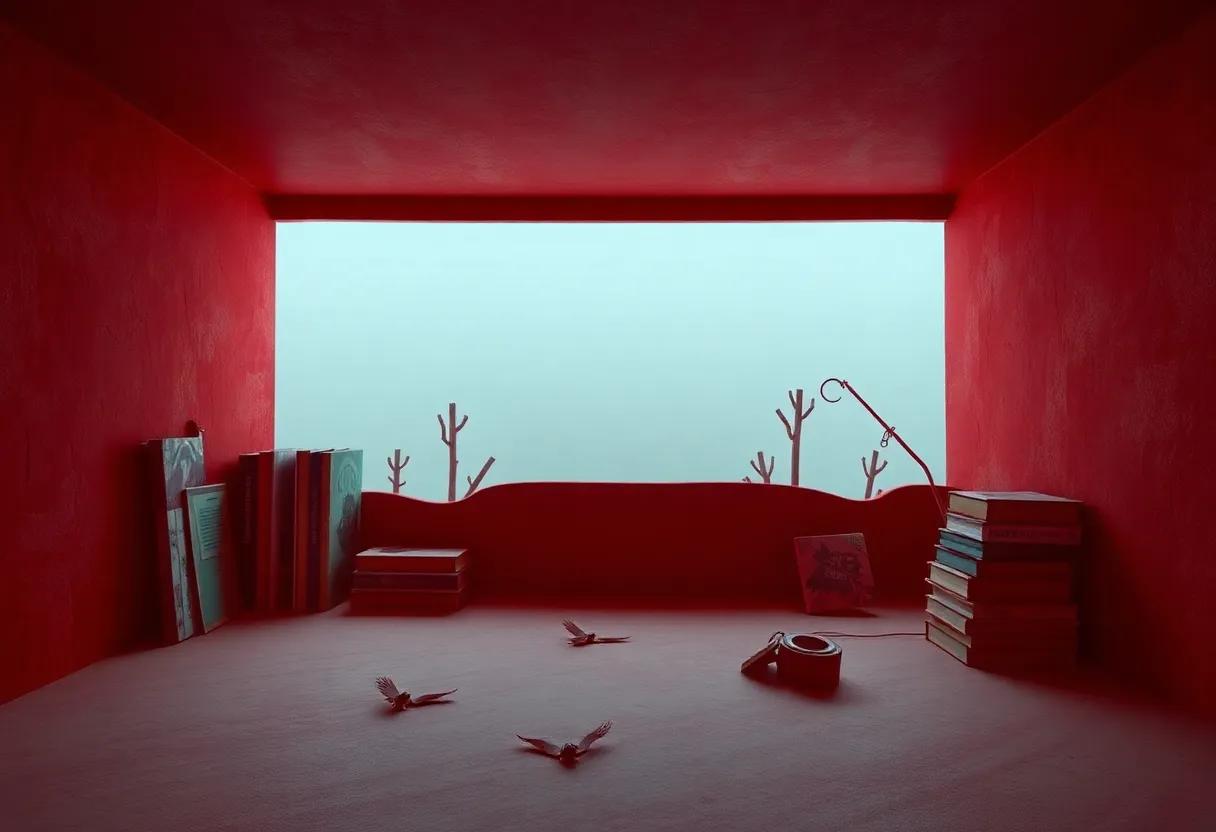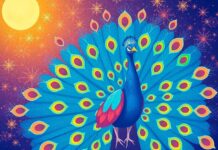In the dimly lit aisles of thrift stores and forgotten library shelves, a peculiar resurrection unfolds-the spine-tingling world of horror paperbacks from the 1970s and 1980s. invites readers on a journey through a transformative era when horror leapt off the pages of pulp fiction to captivate a generation. This book delves into the cultural undercurrents, artistic evolution, and market forces that molded the genre’s vibrant resurgence, shedding light on how these modest volumes became vessels of both fear and captivation. whether one is a seasoned horror aficionado or a curious newcomer, this exploration offers a fresh lens on a period that forged the terrifying tales still reverberating through popular culture today.
The Evolution of Horror Themes in 1970s and 1980s Paperback Literature
During the 1970s and 1980s, horror paperbacks underwent a profound conversion, reflecting societal anxieties and cultural shifts through darker and more psychologically complex themes. The earlier gothic and supernatural motifs began to intertwine with visceral explorations of human fears, ranging from the paranoia of Cold War espionage to the unsettling rise of urban decay. Writers delved into the uncanny, blending everyday reality with nightmarish twists that unsettled readers on a fundamental level. This era saw a rise in the depiction of antiheroes and morally ambiguous villains,challenging traditional notions of good versus evil and illustrating that horror could be as much about internal demons as external monsters.
Key thematic developments included:
- Body horror – focusing on grotesque physical transformations as a metaphor for loss of control.
- Apocalyptic narratives – reflecting nuclear fears and environmental collapse anxieties.
- Psychological suspense – emphasizing paranoia,madness,and unreliable perceptions.
- Occult and satanic themes – tapping into cultural panics and religious fears.
| Decade | Dominant Horror Themes | Notable Paperbacks |
|---|---|---|
| 1970s | Occult, Gothic, Apocalyptic | The Exorcist, Salem’s Lot |
| 1980s | Body Horror, Psychological, Slasher | Pet Sematary, Nightmare on Elm Street adaptations |
Iconic Cover Art That Defined the Era’s Horror paperback Aesthetic
During the ’70s and ’80s, horror paperback cover art became a visual shorthand for fear itself-gritty, surreal, and unrelentingly bold. These covers didn’t just hint at the tales within; they screamed, clawed, and whispered nightmares in lurid colors and grotesque detail. Artists like Boris Vallejo and Michael Whelan transformed book covers into iconic hallmarks of the genre,blending hyperrealism with macabre fantasy. The imagery often featured jagged shadows, blood-dripped typography, and distorted figures-designed to seize the eye instantly amidst crowded bookstore shelves.
The aesthetic crystallized through several recurring motifs,including:
- Grotesque Monsters: Often half-human,half-beast figures poised in dynamic,horrifying action.
- Eerie Landscapes: Mist-shrouded cemeteries, desolate woods, and ominous mansions serving as foreboding backdrops.
- blood and Gore: Strategic splashes of reds contrasted with dark shadows to heighten visceral impact.
| Artist | Notable Work | Signature Style |
|---|---|---|
| Boris Vallejo | “Creepshow” Covers | Muscular fantasy horror, hyper-detail |
| Michael Whelan | Stephen King Novels | surreal, moody atmospheres |
| Sanford Kossin | “Dead of Night” Series | Psychological horror with stark contrast |
How Societal Fears Shaped the Dark Narratives of Vintage Horror Paperbacks
During the 1970s and 1980s, horror paperbacks became a mirror reflecting the anxieties bubbling beneath the surface of society. The Cold War’s looming threat, economic uncertainty, and rapid technological changes fueled a collective unease that found expression in twisted tales of the supernatural and the macabre. These novels often preyed on fears of loss-loss of control, identity, and safety-creating narratives where ordinary people faced incomprehensible horrors that mirrored real-world tensions. Monsters were no longer just mythical beasts; they embodied the intangible dread of nuclear annihilation, urban decay, and social upheaval.
Authors deftly wove these cultural tensions into their stories, using horror as a lens to explore societal fractures. Common thematic elements included:
- Isolation and paranoia amid Cold war espionage fears
- Body horror symbolizing distrust toward medical and technological advancements
- Apocalyptic scenarios reflecting environmental and political anxieties
- Encounters with the unknown illustrating fear of the “Other” and social alienation
| Societal Fear | Narrative Expression | Example Theme |
|---|---|---|
| Cold War Tensions | Shadowy conspiracies; paranoia-driven plots | Invisible threats lurking among us |
| Technological Advancements | Body transformation horrors; loss of humanity | Man vs. Machine nightmares |
| Economic Uncertainty | Desperate survivalist themes; breakdown of social order | Civil collapse and chaos |
Exploring Recurring Monsters and Mythologies That Haunted the Pages
Amidst the eerie glow of dimly lit pages, certain creatures emerged repeatedly, becoming staples of the ’70s and ’80s horror paperback scene.From the shape-shifting werewolves prowling through moonlit forests to the ancient vampires with their seductive yet deadly allure, these monsters were more than mere antagonists-they were reflections of deeper societal fears and taboos. Alongside these classic entities, lesser-known mythologies seeped through the cracks: cryptic ghouls from Middle Eastern folklore, spectral yurei from Japanese tales, and the unsettling dread surrounding Wendigos from native American legend.What made these creatures so haunting was their connection to primal, universal anxieties-death, transformation, and the loss of humanity.
Many authors also mined obscure mythologies to craft fresh terrors that still echoed with timeless dread. the recurring themes often centered on curses, possession, and ancient evils awakening from slumber. Below, some of the more prominent monstrous archetypes along with their mythological origins are highlighted:
- Chupacabra – A modern legend from Latin america, symbolizing the fear of unknown predators.
- Skinwalkers – Navajo shapeshifters embodying betrayal and the breakdown of trust.
- Kali Yuga Demons – From hindu eschatology, representing the decay of moral order.
- Baba Yaga – The ambiguous witch of Slavic myth, straddling the line between menace and mystery.
| Monster | Origin | Symbolism |
|---|---|---|
| Wendigo | Algonquian | Insatiable greed and famine |
| Yurei | Japan | Unfinished business and revenge |
| Chupacabra | Latin America | Fear of the unknown predator |
| Baba Yaga | Slavic | Ambiguity of evil and wisdom |
The Role of Independent Publishers in Popularizing Horror stories
In the landscape of ’70s and ’80s horror literature, independent publishers served as fearless gatekeepers who championed stories that mainstream houses often overlooked. These small presses embraced the macabre and the obscure, offering a platform for emerging authors whose visions redefined the boundaries of fear. Their agility allowed them to experiment with bold covers, lurid blurbs, and gritty narratives that hooked readers hungry for something raw and visceral. Without the constraints of large corporate oversight, independent publishers fostered a creative freedom that turned horror paperbacks into collectible art forms, breathing life into genres like supernatural thrillers, psychological horror, and twisted gothic tales.
Beyond simply printing books, independent publishers created intimate networks between authors and fans. They organized limited print runs, leveraged vibrant cover artwork, and utilized direct marketing strategies, frequently enough placing horror paperbacks in local bookstores and unconventional outlets. This hands-on approach helped cultivate a dedicated cult following, fueling the genre’s explosive popularity. Below is a closer look at what set these publishers apart:
- Risk-taking editorial choices: Embracing experimental storytelling and taboo themes
- Distinctive packaging: Eye-catching cover art and provocative designs
- Targeted distribution: Reaching niche markets through specialty shops and fan conventions
- Author-publisher collaboration: Empowering writers with more creative control
| Publisher | Notable Author | signature Style |
|---|---|---|
| Midnight Press | Jane Holloway | psychological suspense with moral ambiguity |
| Cryptic Books | Tommy Malone | Supernatural horror with vivid gore |
| Shadow House | Selena Graves | Gothic atmospheres and haunted mansions |
Atmospheric Writing Styles That Engaged Readers in Spine-Chilling Ways
Many horror paperbacks of the ’70s and ’80s mastered the art of immersion through their meticulous use of atmospheric elements. Writers didn’t rely solely on blatant scares; instead,they wove intricate textures of dread by evoking unsettling environments that crept into the reader’s mind long after the last page was turned. Dimly lit forests, crumbling Victorian mansions, and fog-laden streets became more than mere settings-they were living, breathing entities that distorted reality and amplified tension. The language often mirrored this approach,using haunting metaphors and sensory details to create a palpable sense of unease. Shadows weren’t just visual-they whispered, lingered, and preyed on the psyche, engaging readers in a sinister dance between fear and fascination.
- Slow builds: Suspense was cultivated gradually, allowing dread to simmer.
- Ambiguous threats: monsters remained partly unseen, twisting creativity into the ultimate horror tool.
- Emotional isolation: Characters often grappled with loneliness, intensifying vulnerability.
- Soundscape cues: Descriptions of eerie silences or unsettling noises echoed through the prose.
| Technique | Effect on Reader |
|---|---|
| Unreliable Narrator | Creates doubt and deepens mystery |
| Evocative Settings | Immerses readers into an eerie world |
| Fragmented Descriptions | Instills confusion and fear of the unknown |
| Psychological Depth | Builds empathy and internal horror |
The synergy between these atmospheric techniques and character development was key to the era’s compelling storytelling. Rather than relying on gore or shock value, the best novels engaged the reader’s imagination and emotions, making every flicker of candlelight or distant howl resonate with primal fear. This nuanced approach allowed stories to linger in the subconscious, transforming mere paperbacks into timeless conduits of terror. By carefully layering these elements, authors crafted experiences that felt intensely personal-a quiet terror you felt creeping below your skin, unfeasible to shake.
Key authors Who Pioneered and Popularized Horror in Paperback Form
During the 1970s and 1980s, a select group of authors revolutionized the horror genre by embracing the paperback format, making chilling tales more accessible to a wider audience. Stephen King, often hailed as the master of modern horror, transformed everyday settings into terrifying landscapes that gripped readers from page one. His ability to blend supernatural elements with human vulnerability set a new standard for paperback horror. Alongside King, Anne Rice injected sensuality and gothic elegance into the genre with her landmark series, introducing readers to a richly dark universe where vampires and mortals entwined in complex narratives.
Other key figures carved distinct niches that enriched the paperback horror boom.Authors like Clive Barker brought a surreal, visceral horror that challenged traditional boundaries, while Dean Koontz infused thriller and suspense with the supernatural, appealing to readers who craved fast-paced terror.This era also saw the rise of prolific writers such as Robert McCammon and peter Straub, whose evocative storytelling and mastery of atmosphere helped define the look and feel of horror paperbacks. Their collective impact created a diverse tapestry of fear that continues to influence the genre today.
| Author | Signature Style | Notable Paperback Titles |
|---|---|---|
| Stephen King | Everyday horror meets supernatural | “Carrie,” “The Shining” |
| Anne Rice | Gothic elegance and dark romance | “Interview with the Vampire” |
| Clive Barker | Surreal and graphic horror | “books of Blood” |
| Dean koontz | Supernatural thrillers | “Whispers,” ”Phantoms” |
| Robert McCammon | Atmospheric and character-driven | “Swan Song” |
A Deep Dive into Noteworthy Titles That Captured the Dark Imagination
During the ’70s and ’80s,horror paperbacks became a portal to the macabre,awakening the darkest corners of readers’ imaginations. These books didn’t just tell chilling tales; they embodied the fears and anxieties of an era marked by societal shifts and emerging subcultures. Titles from authors like Stephen King and Anne Rice set new benchmarks, blending psychological suspense with supernatural dread. What truly set these paperbacks apart was their ability to craft unforgettable atmospheres through vivid descriptions and relentless tension. Their covers, often adorned with lurid artwork and bold typography, beckoned readers into realms where nightmares felt all too real.
The era was defined by a slew of seminal works that continue to influence horror storytelling today, such as “Salem’s Lot” and “The Shining”. Yet, alongside the giants, lesser-known gems carved out unique niches, introducing creatures, curses, and apocalyptic visions that expanded the genre’s boundaries. Noteworthy characteristics included:
- Gritty protagonists grappling with internal demons and also external horrors
- Plotlines woven with folklore and urban legends, enriching cultural fears with supernatural twists
- Climactic sequences that balanced suspenseful build-ups with shocking revelations
| Title | Author | Notable Element |
|---|---|---|
| Carrion Comfort | dan Simmons | Telepathic predators feeding on fear |
| Burnt Offerings | Robert Marasco | Haunted house with malevolent life |
| The Cellar | Richard Laymon | Suburban terror and hidden monsters |
The Influence of Horror Paperbacks on Modern Genre Storytelling
Horror paperbacks of the 1970s and 1980s carved out a bold niche that continues to echo through modern storytelling. These pocket-sized terror machines combined gripping narratives with visceral imagery, forging an intimate connection between reader and fright.Their influence is apparent in how contemporary genre creators blend psychological suspense with supernatural elements,frequently enough favoring atmosphere over explicit gore. The tactile nature of these books, from their lurid covers to their pulp fiction pulp voices, encouraged authors to experiment freely, unrestricted by the conventions of mainstream publishing. As a result, many themes that once seemed niche-such as cosmic horror, existential dread, and morally ambiguous protagonists-found fertile ground in subsequent media like films, television, and digital narratives.
The legacy of these paperbacks is not only thematic but structural. Modern horror storytelling often embraces:
- episodic tension-building, reminiscent of chapter cliffhangers;
- anti-heroic leads struggling with internal and external demons;
- blended genre elements, weaving horror with noir, sci-fi, and even romance;
- intimate scale settings that mimic the claustrophobic feel of a paperback’s page.
These hallmarks are a testament to the enduring power of the era’s paperback horror to shape the way stories frighten, provoke, and linger long after the last page is turned.
| Characteristic | 1970s-80s Paperbacks | Modern Genre Influence |
|---|---|---|
| Narrative Style | Serialized suspense, direct prose | Episodic arcs, atmospheric depth |
| thematic Focus | Supernatural vs. human dread | Complex villainy,blurred morality |
| Character Types | survivors and victims | Anti-heroes,flawed leads |
| Setting | Confined,isolated | Intimate,often claustrophobic |
Collecting Vintage Horror Paperbacks Today: What to Look For and Why
Delving into vintage horror paperbacks from the ’70s and ’80s is an invitation to uncover a tactile piece of genre history. Collectors often seek first editions, identifiable by unique cover art or print details that distinguish them from later reprints.The condition is paramount: crisp spines without creases, intact dust jackets (when present), and minimal yellowing of pages significantly boost a book’s value. Beyond the physical, the author’s signature or inscriptions can transform a humble paperback into a coveted gem. key publishers such as Popular Library,Pinnacle Books,and Dell Publishing played crucial roles in defining horror aesthetics,making their editions particularly prized among enthusiasts.
When scouring collections or estate sales,narrowing focus to certain thematic elements can elevate the experience. Look for distinctive cover art featuring lurid, surreal, or grotesque imagery-the hallmark of the era’s marketing strategy to shock and intrigue. Titles penned by authors like Stephen King, Ramsey Campbell, or Brian Lumley not only capture the zeitgeist but also hold increasing literary and monetary worth.Consider this basic guide when evaluating paperbacks:
- Print run: Lower print runs tend to be rarer and more valuable.
- Cover art originality: Different cover variants can effect desirability.
- Publication year: Early works, especially debut novels, command attention.
- Author prominence: Books from now-celebrated authors hold intrinsic collector interest.
- Condition specifics: Tears, stains, or missing pages drastically reduce collectible value.
| Feature | Why It Matters |
|---|---|
| First Edition Marker | Certifies original printing, often rarer and pricier |
| Cover Condition | Visual appeal impacts both display and investment quality |
| Author Signature | Adds personal provenance, heightening value |
| Publishing House | Some labels are synonymous with classic horror legacy |
Reader Communities and Fandoms That Kept the Paperback Horror Culture Alive
Long before the internet forged virtual gathering spots, paperback horror fans formed tight-knit communities that thrived on sharing and celebrating their passion for chilling tales. Bookstores, libraries, and basement meetups became sanctuaries where enthusiasts exchanged obscure recommendations and swapped battered copies of favorite authors. Fan clubs sprouted, frequently enough centered around iconic writers like Stephen King, Anne Rice, and Clive Barker, fostering a sense of belonging rooted in shared terror and admiration. These groups not only kept the paperback culture alive but also helped elevate the genre’s status from pulp entertainment to a respected literary movement.
These communities were fueled by a vibrant ecosystem of fan activity, which can be seen in the combinations of hobbies and interests that complemented their love for horror paperbacks:
- Zine creation: Homemade magazines reviewing new releases and dissecting horror tropes.
- Correspondence networks: Pen pal systems connecting readers worldwide.
- Convention attendance: Gathering for book signings and panel discussions.
- Collecting rare editions: Hunting for limited-run prints and signed paperbacks.
| Community Activity | Impact on Culture |
|---|---|
| Zines and Newsletters | Amplified fan voices and spread new work |
| Book Swaps | Preserved circulation of rare and out-of-print titles |
| Local Horror Clubs | Built foundational connections and friendships |
| Author Interactions | increased reader loyalty and exclusive content |
Comparing Film Adaptations with Their Original Paperback Sources
When diving into the murky waters of horror paperbacks from the ’70s and ’80s, one quickly realizes that film adaptations often wear a very different skin.Paperback originals thrived on rich, detailed atmospheres and psychological unease, crafting slow-burning dread that nestled deep in readers’ imaginations. Contrastingly, many films opted for visceral spectacle and visual shock, translating the eerie subtlety of printed words into the immediacy of flickering images. This shift frequently meant condensing complex narratives, transforming internal fears into external monsters, and amplifying action sequences to captivate a broader audience.
Despite these differences, several elements remained constant, allowing adaptations to retain their essence while carving new identities. Consider how each medium approached:
- Character Development: Paperbacks offered introspection and fragmented perspectives; films relied on palpable performances and visual cues.
- Atmosphere: Books brewed unease through prose and pacing; movies employed lighting, sound, and camera angles to mimic that tension.
- Plot Complexity: Novels embraced layered storytelling; screenplays often simplified to fit runtime constraints.
| Aspect | Typical Paperback | Film Adaptation |
|---|---|---|
| Fear Delivery | psychological dread, slow build-up | Jump scares, visual horror |
| World-building | Detailed, immersive backgrounds | Selective, visual shorthand |
| Audience Engagement | Internal imagination | Sensory stimulation |
About the Author: Expertise and Passion Behind unveiling the Dark
In peeling back the layers of “Unveiling the Dark,” we find more than just a nostalgic look at ’70s and ’80s horror paperbacks; we uncover a cultural mirror reflecting the fears and fantasies of an era. This exploration invites readers not only to revisit the chilling tales that once lined dusty bookstore shelves but also to appreciate the quiet evolution of horror as a genre. Whether your a longtime fan or a curious newcomer, the book offers a thoughtful journey through a pivotal chapter in literary history-one where darkness was inked onto pages, waiting patiently to be rediscovered.











